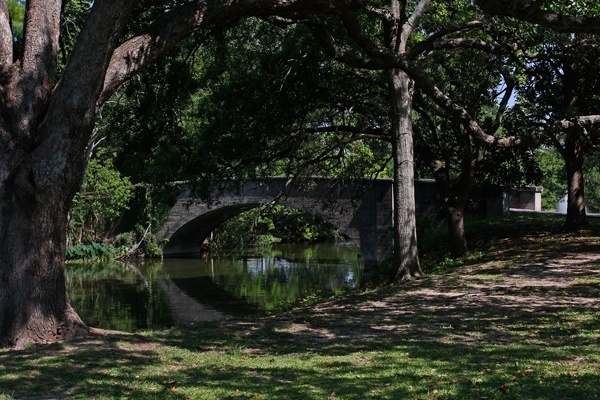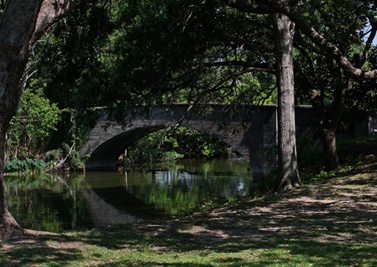
F
ull disclosure: I am not a Southerner, even after a quarter-century down here. I am a white carpetbagger from New England by way of New York City. But then New Orleans is not really the South. It’s a Caribbean port about an hour’s drive from the Deep South, which lies to the north.
New Orleans is justly touted for the abundance of our public life: festivals, parades, sporting events, jazz funerals. To some extent, even stoop and porch sitting has survived, though the invention of air conditioning lured a generation of chatty, vigilant elders back inside, leaving the young to run wild in the streets.
But for all the richness of our public life, not having public transit that everybody more or less has to take leaves New Orleans with a major cultural deficit, at least in the eyes of this New Yorker.
Okay, we’ve got a streetcar. Perley Thomas replicas ply St. Charles Avenue, Canal Street, and the riverfront. Buses bring a more gritty authenticity to the challenge of getting about in the city without a car, but the service is unpredictable and lacks the in-your-face intensity that makes subways the great leveler in New York and other northern cities, even for the well-to-do.
With access to a car, who would consider taking a New Orleans bus or streetcar unless you were going to places—the French Quarter comes immediately to mind or the denser blocks of the central business district—where parking is a nightmare? (And who goes to the French Quarter these days besides tourists?)
No, you have to look beyond the RTA for a broad-spectrum exposure to New Orleanians in all our ragtag glory. But one does not look in vain.
In the absence of a subway, I have come to think of the paved, 1.7-mile roadway that loops around the edges of Audubon Park as one of the more interesting mass-transit infrastructures any American city has to offer. It’s just that the traffic is not motorized, except for the quiet hum of the occasional wheelchair. It’s by foot—or skateboard, bicycle, baby carriage, whatever. Anything but cars. They’ve been banned since 1980. The pavement’s circularity, enforced by it being the perimeter of a golf course on which mere mortals dare not tread, means that it’s a road to nowhere at all. But en route, in addition to the squabbling flocks of ducks and geese, swans and egrets, you will encounter an extraordinary variety of featherless bipeds, genus Orleaniensis.
There are the balding lawyers doing a couple of laps for their cardiologists and zoned out on whatever is coming through the plugs in their ears—Led Zepplin? The latest John Grisham thriller? The morning stock report? There are the young women of Tulane and Loyola, yacking in pairs or jogging endlessly to shed the proverbial freshman fifteen. There are the dog walkers bearing wee plastic satchels of scooped shit to the nearest trash can. Love-sick couples catch a breath of air before repairing again to the bower. There are the scrawny skateboard dudes with more tattoos than they have years of school. Young parents push baby carriages, sometimes at a trot. Or nannies, up from the islands, do it for them. Grannies hobble along. Dangerous hombres plot trouble and slip into the underbrush at the sight of a cop.
There is no basketball court in Audubon, no doubt a race-based calculation, a throwback to the days when the huge municipal pool at one end of the park was for whites only. (After integration it stood empty for a time and was eventually filled in.) Hooplessness costs Audubon some of the energy and tumult of nearby streetcorner parks. But, b-ballers aside, black people are about as numerous as whites in the throng of us rotating beneath the canopy of live oaks and the blank stare of the mansions that rim the park.
Asians and Hispanics abound as well, making Audubon, all in all, a kind of racial Arcadia, a mock-up of what it would be like if the city beyond the trees ever transcended its persistent vestiges of structural racism. We look about idly as we circle the park—the oaks, the turtles and egrets, the Spanish moss. At a glance, we take in each other.
The original Mayor Landrieu, father of the incumbent, can sometimes be seen taking the sun in Audubon Park, a white man esteemed by many blacks and still reviled by Old Guard whites for having begun the desegregation of city government forty years ago. A former King of Carnival and his wife are not above a weekend stroll, hand in hand, among his majesty’s subjects. I have seen congressmen and TV stars and towering pro-ball players drift by, half-hoping not to be noticed (but only half). James Carville, the Clinton-era operative, could be called a regular among the fat burners, except that he has no fat to burn—and keeps running anyway. (I have yet to see his wife Mary Matalin in the park, maybe because, as the conservative half of the oddest coupling in politics, she may be less comfy among the lumpen.)
Which is what the rest of us are—hoi polloi in all our variety: white, black, Asian, kids, geriatrics, the young and the restless, the urban poor and the well-sneakered. There are swing sets and a jungle gym for little kids in one corner of the park. Volleyball nets spring up in another. Boom boxes pulse and barbecue smoke wafts from the pavilions. The place is a magnet for sprawling family reunions. They spill out onto the lawns between the bayou at the park’s south end and the pavement we endlessly tread and pedal.
Most of Audubon, the vast mid-section, is for practical purposes worthless—which is to say, a golf course. The rest of us can only skirt this senseless waste of urban green space, but compression is what gives the roadway its character and singular sense of purpose. Signage mandates that the traffic flow counterclockwise, but it’s a self-enforced rule meant mainly for bicyclists. To liven up a jog or a stroll, I recommend running against the flow. You get to study faces, not just the backsides to which a jogger’s review of the human condition is otherwise limited. Not uninteresting, but less so than the faces with their winks, smiles, and stoic scowls.
As mentioned, there are other ways to see New Orleans almost whole like this. Saints games. Second-lines, Carnival parades. But these are special occasions and—the more important drawback—we only experience each other obliquely. We rub shoulders, but our faces are turned toward the casket lofted heavenward, or toward the helmeted millionaires running onto the gridiron or the deities-for-a-day who roll past on giant floats, flinging fake jewels and doubloons to beggars with upstretched hands.
Audubon’s an everyday thing. It’s not the A-train or the No. 1 rumbling down Broadway at rush hour. But it’s a helluva lot better than a car stuck in traffic, and if your destination is New Orleans, going around in circles sometimes gets you there just as fast.
Jed Horne is an editor of The Lens, an online New Orleans news service. His books include Desire Street and Breach of Faith, which NPR described as “the best of the Katrina books.”
Return to “On the South” for more on the region, the culture, and the mindset.

